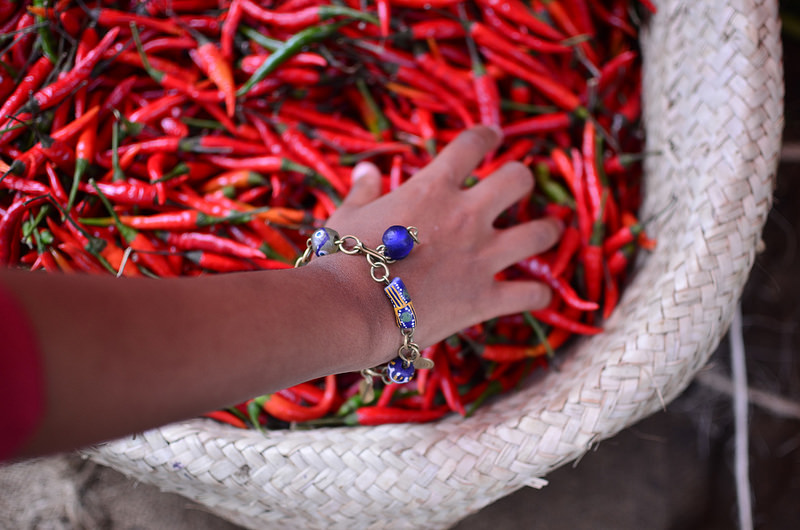المفاهيم الأساسية
The author explores the misconception of Kenyan food lacking spice and highlights the prevalence of chilies and peppercorns in Nairobi's culinary scene.
الملخص
In Nairobi, the author discovers a vibrant array of chilies, challenging the preconception that Kenyan cuisine lacks heat. From fiery Thai chicken salads to diverse chili varieties at Ngara market, the city surprises with its spicy offerings. Despite the abundance of chilies, not all eateries embrace intense heat, showcasing a nuanced approach to spicing dishes. The contrast between black pepper usage and chili tolerance among Kenyan friends underscores individual spice preferences and challenges assumptions about local flavors.
تخصيص الملخص
إعادة الكتابة بالذكاء الاصطناعي
إنشاء الاستشهادات
ترجمة المصدر
إلى لغة أخرى
إنشاء خريطة ذهنية
من محتوى المصدر
زيارة المصدر
www.kitchenbutterfly.com
Photo Essay: Hot & 'Chilies' in Nairobi - Kitchen Butterfly
الإحصائيات
"True, chilies are common but peppercorns are, and that too is heat."
"One of the first things I ate in Nai was a Thai Chicken salad at Java House – it set my mouth on fire!"
"Then I went to Ngara market and saw loads of gorgeous chilies."
"There were bird’s eye chilies and other kinds."
"The one thing I found interesting was how a number of Kenyan friends could use a lot of black pepper which I found hot, yet not tolerate chilies."
اقتباسات
"It was so hot…and this was day one."
"I didn’t know they had ’em."
"Interesting ehn – I guess spice notes differ and one should not take reports for granted."
الرؤى الأساسية المستخلصة من
by Kitchen Butt... في www.kitchenbutterfly.com 10-17-2016
https://www.kitchenbutterfly.com/2016/photo-essay-hot-chilies-in-nairobi/
استفسارات أعمق
What cultural influences have shaped Nairobi's spicy culinary landscape
Nairobi's spicy culinary landscape has been shaped by a combination of cultural influences. One significant influence is the historical trade routes that brought spices from Asia and the Middle East to East Africa, including Kenya. These spices, such as chilies and peppercorns, were integrated into local cuisine over time. Additionally, Nairobi's diverse population, with people from various ethnic backgrounds and regions within Kenya, has contributed to a fusion of different spice preferences and cooking styles.
How do varying spice preferences reflect regional diversity within Kenya
Varying spice preferences in Kenya reflect the country's regional diversity in terms of climate, agriculture, and cultural heritage. For example, coastal regions like Mombasa have been influenced by Swahili culture and Arab traders, leading to dishes with strong flavors like pilau rice seasoned with cloves and cinnamon. In contrast, communities in the Rift Valley may use milder spices due to their agricultural practices focusing on crops like maize and potatoes. The diversity in spice usage across different regions showcases the rich tapestry of Kenyan culinary traditions.
How can exploring local food traditions enhance cross-cultural understanding
Exploring local food traditions can greatly enhance cross-cultural understanding by providing insights into a community's history, values, and way of life. By delving into the culinary practices of a particular region or ethnic group in Kenya, individuals can learn about traditional ingredients used for flavoring dishes and understand how these recipes are passed down through generations. Sharing meals with locals not only fosters connections but also promotes appreciation for cultural diversity. Through food experiences that highlight unique flavors and cooking techniques specific to each community, individuals can develop a deeper respect for different cultures while enjoying delicious meals together.
0
